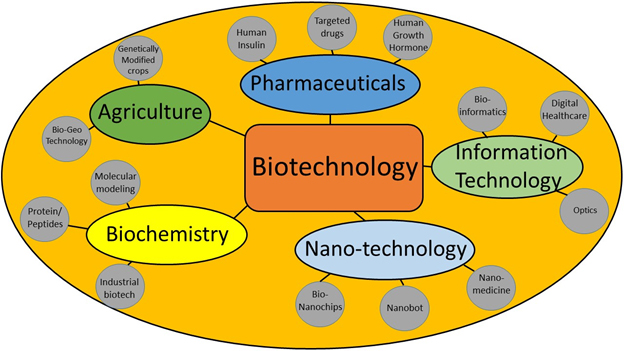Pertains to the following courses of the Programme titled M.Sc. in Quantitative Finance offered by the Department of Economics:
- Financial Management
- Financial Mathematics
- Financial Modelling using excel
- Financial Econometrics
- Asset Liability Management
In literary sense the word ‘yoga’ means addition, union or integration toward growth of a small volume to a large volume. The sense of addition applies to a tangible object, say, the mature value of a recurring deposit accumulated through a small amount of periodical deposit. The word ‘addition’ is used in tangible or concrete sense while the word ‘integration’ is used in abstract or conceptual sense, say, the discipline of ‘Business Study’ indicating integration of the disciplines of Commerce and Management. On the one hand the word ‘yoga’ is popularly mentioned in the sense of a spiritual activity and on the other hand it is used frequently as an exercise in mathematics. A historically early reference to the connection between yoga as spiritual value and mathematics as a process of attaining spiritual values over a series of rebirths is spelt in Meno by Plato but the Vedas are considered to be the explicit references in this matter, say Rig Veda for geometry, Yajur Veda for the concept of big numbers and Atharva Veda for the concept of zero. The connection of Sufism and Arabs to yoga and mathematics are also relevant here. Yoga in all faiths and communities is considered as a process of a homogenous object or entity becoming larger and larger in size and gradually too large to be far from infinity that encompasses heterogeneous objects and then finally becoming one with the infinity, just like leaves, flowers and fruits of a tree are different objects but they are one with the tree and the tree was embedded in a small seed. Yoga is seen essentially as a process of ascendance from a state which is changeable, finite and temporal limited by time and space to a state infinite and of no-change. The concept of time in the context of a soul traversing from one to another birth is embedded in the dialogues between Plato and as well as in the reincarnation theory of Hinduism. In what follows we shall see how the application of mathematics to yoga over a time period in the secular sense when stripped of religious and spiritual characteristics, forms inter alia the fulcrum of traditional non-Islamic finance literature that is taught and practiced in around two-third of the countries of the word including India and USA.
The discipline of finance revolves around choosing the appropriate time value of money in the form of return on asset and cost of liability in order to maximize the difference between the two over the chosen time period and also to maximize reputation in matter of servicing or discharging the liabilities. Asset means a contract that involves current outflow of cash in lending or investing and future inflow of earnings and a contract of reverse nature is called a liability. Calculating time value of money and formulating strategies to optimize time value of money involves application of higher level of mathematics including integral calculus to the inputs available from various book of accounts internal to a firm and external data on macroeconomic variables and financial markets. The time value of an asset for a number of short periods can be integrated over the continuum of a long period through rolling activities for the purpose of comparison over a single long period in terms of profitability. This financing activity is integration (yoga) of the mathematical value of returns or net return and has underlying economic considerations regarding choice of assets for the purpose of deploying investible or lendable funds and the choice of liabilities for the purpose of raising or procuring funds. A financial product or security is an asset for the investor or lender and a liability for the issuer or borrower. The risk and return profile of a financial security depends on the character of the issuer. An investor can study the character of an issuer with help of the latter’s financial statements, past repayment records and credit rating. Depending on the need of investors and issuers of diverse nature, a number of offshoots of the finance discipline evolved with the titles Security Analysis and Portfolio Management or a slightly different Investment Analysis and Portfolio Management, Market Risk Management and Credit Risk Management to serve the interest of the investors and borrowers on the one hand and on the other hand Corporate Finance and Project Finance serve the interests of the issuers or borrowers. The titles of Financial Management, Financial Mathematics, and Financial Markets & Regulatory Systems or a slightly different title Financial Markets & Institutions at the basic level, Financial Modelling using excel at the middle level, and at the advanced level Financial Econometrics and Derivatives serve the purpose of educating both of investors and issuers.
Places of employment as finance professional are the departments or divisions of treasury, international banking, risk management, analytics and asset liability management in banks (e.g. SBI Treasury in UK), development banks (e.g. World Bank and Asian Development Bank), non bank financial companies (e.g. LICI Treasury and ICICI Prudential AMC Risk Management Department ), clearing houses (e.g. CCIL Risk Management Department), broking houses (e.g. HDFC Securities), corporate groups (e.g. Tata Group Treasury in Singapore), regulatory bodies (e.g. Reserve Bank of India), rating agencies (e.g. Fitch and CIBIL), consultancy and advisory firms (e.g. Dun and Bradstreet) and exchange houses (e.g. Singapore Exchange Limited). The Financial Risk Management (FRM) certification by GARP (Global Association of Risk Professional) is mandatory in matter of taking the finance career to the top notch in treasury and risk management.










